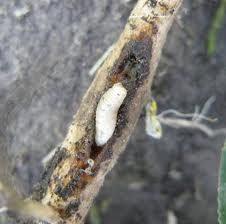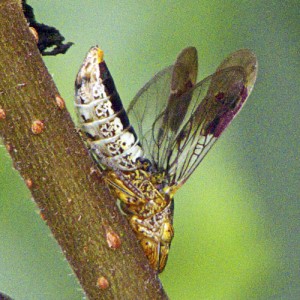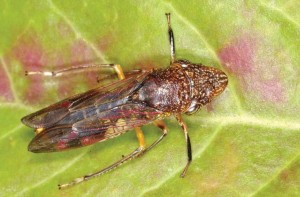“By gnawing through a dike, even a rat may drown a nation” aptly quoted by Hon. Edmund Burke. This is the power of rats and their family of rodents. With rodent population growing 10X faster than humans, the riot caused by them is also escalating at an equal pace. Rodents predominantly affect rural families in three main ways: they damage the irrigation tubing in the field as well they eat, spoil and contaminate stored food; they are liable to disrupt basic gas/ water/ power supply by disrupting haulage tubes and cables; and they carry diseases of humans and their livestock. Asia Pacific region contains two-thirds of the World’s poor—approximately 800 million people in 2001— and the majority of these people live in rural areas. Management of rodent pests in agricultural regions is therefore a high priority for reducing poverty. Polymer products are particularly affected since they cannot endure the attack by rodents. A sneak peek into the rodent invasion at varied levels in myriad applications is illustrated. Conventionally available and popularly used rodenticides cause chronic diseases that may be more severe than the malady caused by rodents’ invasion. The article aims to demonstrate the necessity of increased awareness so as to minimize the rodent incurred economic losses and to emphasize the need to switch to safer and eco- friendlier alternatives.
Rodent menace:
The number may be intriguing but true; forty percent of mammal species found on earth are rodents. Scores of rodents are found on all continents other than Antarctica. Common rodents include mice, rats, squirrels, porcupines, beavers, guinea pigs and voles. Rodentia is an order of mammals also known as rodents, which is characterized by two continuously growing incisors in the upper and lower jaws which must be kept short by gnawing. Gnawing is defined as the act of biting, chewing on, or eroding with the teeth.
Indeed, in almost all regions, the rodent species found around houses and in fields are viewed as ‘pests’ or even as ‘vermin’. And often with just cause—the rodents consume and spoil crops in the field and in storage bins, they damage household possessions and even buildings and roads, and they play an often overlooked but highly significant role in the transmission of various diseases.
Rodent menace can cause severe economic losses. Rodents chew on plastic doors, sidings, benches, molded plastic parts, cables, wires, railway components practically anything. In the wild too, they chew on products made of plastics such as trash bins, containers, cables etc. The rodent menace to polymer products in various industrial sectors is illustrated in Fig. 1:
Fig. 1: Rodent menace in different industrial sectors.
Rodents are particularly fascinated to plastic pipes and tubing which are laid either on surface or underground. The color and odor of plastic pipes attract rodents, which in search of water and their fetish for gnawing action attack these pipes; that may or may not be hauling water.
Wires and Cables: Rodents gnawing through wires could result in short circuits leading to fire hazards; whereas damage to optical fiber cables could disrupt transmission of sensitive communication. Rodents often disturb underground train services and metro rail services. Sterlite Optical Technologies Ltd. has published several papers on rodent damage to wires and cables; vividly troubled by this issue. They claim that rodent attacks have been a chief cause for heavy maintenance cost of duct & direct-buried cable networks and is a threat to service operators in almost all geographic locations of the world.
Agriculture: Rodents have two major impacts. The first is the substantial pre- and postharvest losses they cause to agriculture. The second is as carriers of debilitating human diseases.
Drip irrigation & Pipelines (pre- harvest losses): Drip irrigation, also known micro- irrigation, is an irrigation method which saves water and fertilizer by allowing water to drip slowly to the roots of plants, through a network of valves, pipes, tubing, and emitters. However, the whole purpose of conservation of water using such systems turns futile if these tubes get vulnerable to rodent attacks. Some farmers despondently state that “for every eight rows of rice they sow for their families, they sow two rows for the rats.” Pioneers in drip irrigation systems, Jain Group, has now included rodent deterrent type of hoses/ tubes in their product catalogue.
Storage containers and bags (post- harvest losses): Rodents have an enormous economic impact on stored grain in developing countries. In one year, 25 adult rats would eat and damage about half a ton of grain and produce about 375,000 droppings! Good data on postharvest losses caused by rodents are sparse; however, reports of up to 20% postharvest losses of rice are not unusual. Under traditional rice farming systems, rodents generally cause chronic losses to production in the order of 5–10% per annum. In Asia, a loss of 5% of rice production amounts to approximately 30 million tonnes; enough rice to feed 180 million people for 12 months.
Gas hauling devices: Sensitive applications such as gas transfer are also disturbed by chewing of rubber gas tubing and pipelines. This has now compelled the pipeline and rubber tubing manufacturers to fabricate products, with anti- rodent properties, complying with government specifications. Timesonline, UK News, had reported a disastrous death of old lady due to gas explosion. Gnawing rodents were to blame for the death of an 80-year-old woman in a massive explosion that flattened her home. They had gnawed through her kitchen rubber pipes, causing a build-up of gas in the room.
Aircraft arrester systems: According to study by the Defense Research and Development Establishment, Gwalior, India; the aircraft arrester system remains in open ground all the time, since it is used on runways. It is damaged by rodents who by nature chew and cut materials and hence nylon tapes in open fields are susceptible to these rodent attacks. Fig. 2 shows a snapshot of the damage to the conveyor belts with and without rodent repellent properties published by the researchers in an article. The rodents consume more than 50% of the nylon belt without any rodent repellent additive.
Fig. 2: Degree of damage in tapes with and without rodent repellent property (Pigment & Resin Technology, 34/5, 2005, 270–274)
Automobile: Many of us have had trouble starting our cars in the morning as a rat or a vole had eaten through the cable. Complaints of car shut-downs and engine damage are extensive and prevalent globally. And to add to the dilemma, rodent damage is not covered under most auto insurance schemes.
Domestic appliances: LG, one of the leading home appliance manufacturers, has been trying to come up with new methods to prevent the cable and wiring of refrigerators from rodent attack. They have developed anti- rodent sleeves using ROHS compliant polymer additives for such measures.
Current methods and their drawbacks for rodent control:
Traditional chemicals used as rodenticides include organochlorine pesticides like Lindane and heavy metal based compounds such as Copper Naphthenate and Lead Naphthenate. These are used as additives in polymer industry during extrusion. However, these chemicals are not meant for use in polymer products due to following concerns:
- Human Health Hazard: These harmful rodenticide additives volatilize at polymer processing temperatures and release extremely fumes. Not only does this lead to an extensive loss of chemical during processing; but also poses fatal hazards to workers handling such products at the shop floor. A short term or an acute exposure to such toxins can cause brain damage, kidney damage and gastrointestinal distress while a long term or chronic exposure would mean adverse effects on kidney, blood pressure and central venous system of humans. Carcinogenic and mutagenic disorders have also been reported.
- Environmental issue: The use of such pesticides is also a serious environmental concern as they leach out from the polymer to enter the atmosphere and are later deposited by rain. They get carried into surface waters as well as ground water. Being fat-soluble such chemicals tend to accumulate through food chains, as is common with organochlorine pesticides.
- Regulatory norms: Most countries like Finland, Indonesia, Korea, Netherlands, New Zealand, Saint Lucia, Sweden, Australia, Austria, Cyprus, Norway and Sri Lanka have either banned or restricted the use of Lindane and other such poisonous pesticides. In India too, eminent government bodies like TEC, RDSO, etc have defined the antirodent test methodology to account for the non toxic nature of the additives, and to curb the use of hazardous chemicals by the polymer industry.
Thus, control over rodents in a safer, better and eco-friendlier manner is the need of the hour; in India and other parts of the world.
Non toxic and more efficient alternative:
Employing innovative masterbatch formulation techniques and focusing on environmental issues and safety norms that are the call for the day, polymer-specific masterbatch for effective rodent repellence is now possible. Combirepel™, a patented product by C-Tech Corporation, has been successful in keeping the rodents away from plastic articles in non hazardous manner. These are compatible with almost all polymers used for cable/ tubing/ sheets/ pipes applications. The product is made from natural oils and is free of any chemical toxins or heavy metals.
Combirepel™ does not kill but only repels the animal by making use of the sensory mechanisms. The product functions from a distance due to the foul smell which generates a typical fear response in the animal. Ferocious species are further deterred from biting by advanced mechanisms like dermal irritation, extremely bitter taste, sensory stimuli modification and henceforth conditioning of their response towards the Combirepel™ containing products. Thus, Combirepel™ actually helps in modifying animal behavior. Rodents being social animals also communicate the bad experience to their population in vicinity.
It is also available in lacquer and liquid form and can be easily coated onto an application to repel the rodents. The best part about this product is that it works on the mechanism of repellence and does not kill the target species. i.e. rodents, thus being in accordance with the need of the century, Sustainability and green chemistry.
Contact us at technical.marketing@ctechcorporation.com if you’re facing problems with rodents and get best remedies to combat the pest menace.
Also, visit our websites:
http://www.ctechcorporation.com/
http://www.rodrepel.com/
http://www.termirepel.com/
http://www.combirepel.com/
Follow our Facebook pages at:
1] https://www.facebook.com/Combirepel-411710912249274/
2] https://www.facebook.com/Termirepel-104225413091251/
3] https://www.facebook.com/Rodrepel-120734974768048/
Follow us on our Twitter pages at:
1] https://twitter.com/rodrepel
2] https://twitter.com/termirepel
3] https://twitter.com/combirepel








